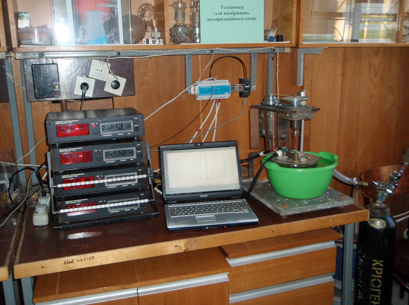Corrosion protection of steel in condition of the operation of new energy-saving generators - contact water heaters
The electrochemical behavior of steel in a model of contact water heating was investigated. It was shown that the increase in temperature, carbon dioxide concentration, the application of stirring lead to an increase in corrosion rate, which is not inhibited in time unlike corrosion in the water with natural CO2 content. The dependence of pH on the concentration of CO2 was established, which is the main corrosion factor.
It was revealed that the application of magnesium protection reduces the corrosion rate of steel in 3 times, but the protective current is too high - 250 mA in the laboratory conditions. Dissolution of zinc anode slightly increases the degree of protection, but the process is not stable due to passivationof zinc because of the formation of insoluble carbonate compounds on the surface.
An increase in the magnesium protection efficiency was achieved with the introduction of inorganic inhibitors - Ca (OH)2 into water. This leads to neutralization of free carbonic acid, increasing the pH and formation of calcium carbonate precipitate with primary structure of aragonite. Tests in industrial conditions showed that the application of such a combination can reduce the corrosion rate in the conditions of contact water heaters operation from 2 to 0.15 mm/year.
An effective organic inhibitor IKVS-2 was found, which at a concentration of 100 - 150 mg/dm3 provides tenfold corrosion inhibition of steel in the water. In order to reduce the protective concentration of inhibitor a new combined method of steel corrosion protection was developed, which consists in the injection of IKVS-2 inhibitor into the solution (30 mg/dm3 concentration) and the simultaneous dissolution of zinc anode with current of 30 mA. Synergy of these inhibitory factors was revealed. Using this method reduces the corrosion rate in 50-100 times (from 2 to 0.02 mm/year), prevents local corrosion and has a residual effect when inhibitor concentration and anodic dissolution current are reduced.
Based on the conducted investigations and laboratory tests the recommendations for the industrial implementation of new steel corrosion protection methods were developed. Initial data for the development of corrosion protection units for heat distribution systems with contact water heating were formulated.

| Attachment | Size |
|---|---|
| 614.5 KB |




